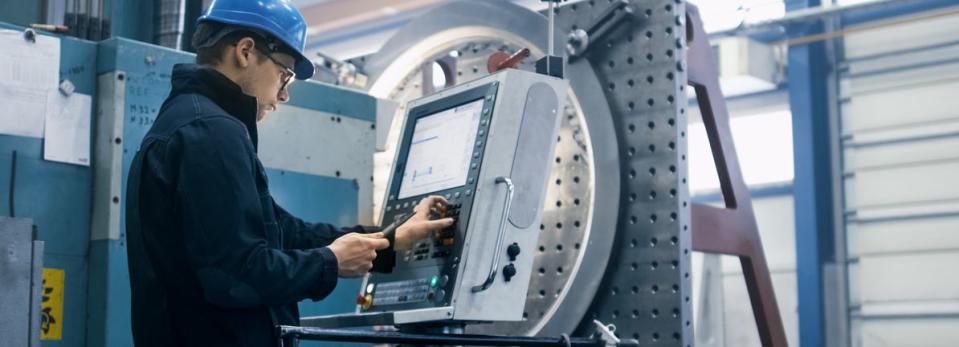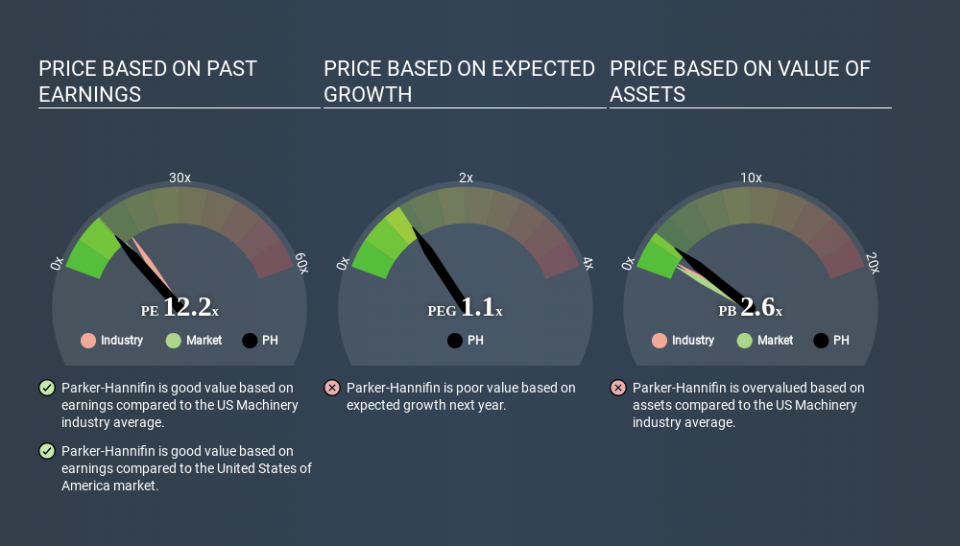What Is Parker-Hannifin's (NYSE:PH) P/E Ratio After Its Share Price Tanked?

To the annoyance of some shareholders, Parker-Hannifin (NYSE:PH) shares are down a considerable 33% in the last month. Even longer term holders have taken a real hit with the stock declining 28% in the last year.
All else being equal, a share price drop should make a stock more attractive to potential investors. While the market sentiment towards a stock is very changeable, in the long run, the share price will tend to move in the same direction as earnings per share. So, on certain occasions, long term focussed investors try to take advantage of pessimistic expectations to buy shares at a better price. Perhaps the simplest way to get a read on investors' expectations of a business is to look at its Price to Earnings Ratio (PE Ratio). Investors have optimistic expectations of companies with higher P/E ratios, compared to companies with lower P/E ratios.
View our latest analysis for Parker-Hannifin
Does Parker-Hannifin Have A Relatively High Or Low P/E For Its Industry?
Parker-Hannifin's P/E of 12.17 indicates relatively low sentiment towards the stock. If you look at the image below, you can see Parker-Hannifin has a lower P/E than the average (15.5) in the machinery industry classification.
This suggests that market participants think Parker-Hannifin will underperform other companies in its industry. Many investors like to buy stocks when the market is pessimistic about their prospects. It is arguably worth checking if insiders are buying shares, because that might imply they believe the stock is undervalued.
How Growth Rates Impact P/E Ratios
Generally speaking the rate of earnings growth has a profound impact on a company's P/E multiple. Earnings growth means that in the future the 'E' will be higher. Therefore, even if you pay a high multiple of earnings now, that multiple will become lower in the future. Then, a lower P/E should attract more buyers, pushing the share price up.
Parker-Hannifin had pretty flat EPS growth in the last year. But over the longer term (5 years) earnings per share have increased by 7.6%.
Don't Forget: The P/E Does Not Account For Debt or Bank Deposits
One drawback of using a P/E ratio is that it considers market capitalization, but not the balance sheet. That means it doesn't take debt or cash into account. Theoretically, a business can improve its earnings (and produce a lower P/E in the future) by investing in growth. That means taking on debt (or spending its cash).
Spending on growth might be good or bad a few years later, but the point is that the P/E ratio does not account for the option (or lack thereof).
Parker-Hannifin's Balance Sheet
Parker-Hannifin's net debt is 52% of its market cap. If you want to compare its P/E ratio to other companies, you should absolutely keep in mind it has significant borrowings.
The Bottom Line On Parker-Hannifin's P/E Ratio
Parker-Hannifin trades on a P/E ratio of 12.2, which is fairly close to the US market average of 13.1. With significant debt and no EPS growth last year, the P/E suggests shareholders are expecting higher profit in the future. What can be absolutely certain is that the market has become significantly less optimistic about Parker-Hannifin over the last month, with the P/E ratio falling from 18.1 back then to 12.2 today. For those who prefer to invest with the flow of momentum, that might be a bad sign, but for a contrarian, it may signal opportunity.
When the market is wrong about a stock, it gives savvy investors an opportunity. As value investor Benjamin Graham famously said, 'In the short run, the market is a voting machine but in the long run, it is a weighing machine. So this free visual report on analyst forecasts could hold the key to an excellent investment decision.
Of course, you might find a fantastic investment by looking at a few good candidates. So take a peek at this free list of companies with modest (or no) debt, trading on a P/E below 20.
If you spot an error that warrants correction, please contact the editor at editorial-team@simplywallst.com. This article by Simply Wall St is general in nature. It does not constitute a recommendation to buy or sell any stock, and does not take account of your objectives, or your financial situation. Simply Wall St has no position in the stocks mentioned.
We aim to bring you long-term focused research analysis driven by fundamental data. Note that our analysis may not factor in the latest price-sensitive company announcements or qualitative material. Thank you for reading.

 Yahoo Finance
Yahoo Finance 
